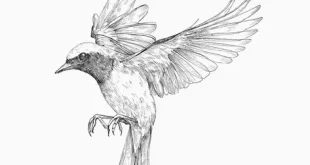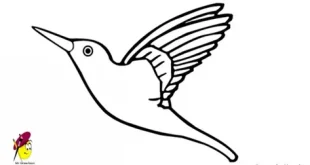How White Stork Birds Habitats When Observed in the USA
Introduction to White Stork Birds

White Stork birds are among the most iconic species, recognized for their graceful flight and symbolic cultural significance. These tall, long-legged birds are native to Europe, Asia, and Africa, but occasionally appear in the USA. Known for their distinctive white plumage accented with black wings, they are admired by bird enthusiasts worldwide. Their reputation as harbingers of good fortune adds to their global recognition and cultural importance. In the USA, sightings are rare, but occasional reports spark excitement among bird watchers and ornithologists. Their unique nesting behavior on tall structures, including rooftops and chimneys, makes them particularly memorable. Learning about these fascinating birds provides deeper insight into avian migration, adaptation, and ecological significance. Observing their behavior reveals the vital connections between migratory bird species and diverse ecosystems.
Physical Features and Distinctive Traits
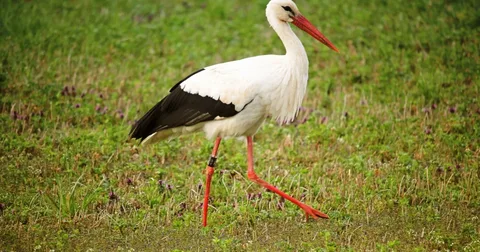
The physical features of White Stork birds make them instantly recognizable and appealing to bird lovers across continents. Standing nearly four feet tall with wingspans approaching seven feet, their appearance commands admiration and curiosity. Their long pointed bills are adapted for catching prey, while slender red legs assist with efficient foraging. The plumage primarily consists of clean white feathers accented with bold black on extended wings. These distinct traits ensure accurate identification, even during flight over wetlands, farmlands, or grasslands. In the USA, ornithologists occasionally record sightings during unusual migratory patterns or after storms disrupt normal routes. Bird watchers find these features fascinating because they highlight evolutionary adaptations necessary for survival in diverse habitats. White Stork birds remain a symbol of resilience, elegance, and natural harmony across multiple regions worldwide.
Habitat and Global Range

White Stork birds prefer open habitats such as farmlands, meadows, marshes, and wetlands rich with prey and nesting opportunities. Native to Europe and Africa, they migrate seasonally across long distances, covering thousands of miles during annual movements. They build large nests in trees, cliffs, or even rooftops, demonstrating their remarkable adaptability to varied environments. Though rarely spotted in the USA, occasional wanderers appear due to changes in migratory patterns or displacement. Such sightings encourage American bird watchers to appreciate the global diversity of avian life beyond local species. Their dependence on wetlands and open areas underscores the importance of habitat preservation for sustaining migratory populations. Conservationists emphasize that the survival of White Stork birds depends strongly on international cooperation for environmental protection. Safeguarding ecosystems ensures continuity of migration routes and stability for countless interdependent wildlife species globally.
White Stork Birds Behavior and Feeding Habits
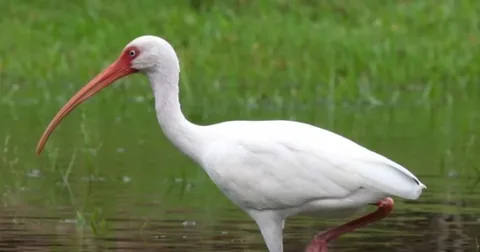
The behavior of White Stork birds reflects a blend of patience, skill, and opportunism within their preferred ecosystems worldwide. They are carnivorous, feeding primarily on fish, frogs, insects, rodents, and occasionally small reptiles found in wetlands. Their long bills allow them to probe soil or shallow water effectively while searching for suitable food resources. When foraging, they often hunt alone, yet during migration they travel in flocks known as kettles. Their graceful soaring flight relies heavily on thermal currents, conserving energy across vast continental distances. In the USA, reports of rare sightings excite bird enthusiasts who study their foraging and migratory patterns closely. Such observations provide valuable data for conservation organizations monitoring global avian movement and ecological health. Their ability to adapt feeding habits highlights resilience and intelligence developed through centuries of natural evolution.
Conservation and Human Connection
Conservation efforts for White Stork birds remain essential as urbanization, habitat destruction, and agricultural expansion threaten their survival. In many parts of Europe, nesting sites once declined drastically, yet strong conservation programs helped restore populations. Artificial nesting platforms, wetland restoration, and community engagement have been vital for supporting their long-term survival. In the USA, although sightings are rare, public awareness campaigns encourage respect for international bird conservation efforts. Educators and zoologists highlight the White Stork as a symbol of harmony between humans and wildlife. Their cultural association with good luck continues to inspire efforts for habitat protection and sustainable coexistence. Protecting wetlands and migratory corridors not only safeguards White Stork birds but also countless other migratory waterfowl species. Promoting conservation ensures that these majestic birds remain admired symbols of balance and ecological responsibility worldwide.
White Stork Birds: Majestic Travelers of the Skies
White Stork Birds are large, elegant birds admired for their long legs, necks, and striking white and black plumage. Found across wetlands, meadows, and farmlands in the USA, they are known for their graceful flights and impressive migratory patterns. These birds build large nests on rooftops, trees, or platforms, often returning to the same place year after year. Their diet mainly includes insects, frogs, and small reptiles, which helps control local pest populations. White Storks are social and often seen in groups, especially during migration. Their gentle presence and symbolic association with luck and new life make them one of the most revered birds in many cultures worldwide.
Habitat, Behavior, and Conservation of White Stork Birds
White Stork Birds thrive in open wetlands, grasslands, and agricultural areas where food is plentiful. They feed by foraging in shallow waters or fields, using their long beaks to catch prey efficiently. During migration, they cover thousands of miles, often flying in large flocks using thermals to conserve energy. In the USA, they are occasionally seen as visitors, although they are more common in Europe and Asia. Habitat loss and wetland drainage remain key threats to their survival. Conservation efforts focus on protecting nesting sites and ensuring safe migratory paths. White Stork Birds continue to symbolize hope, renewal, and harmony in nature, making them a cherished species for bird enthusiasts.
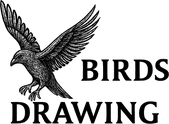 Birds Drawing Birds Drawing
Birds Drawing Birds Drawing

